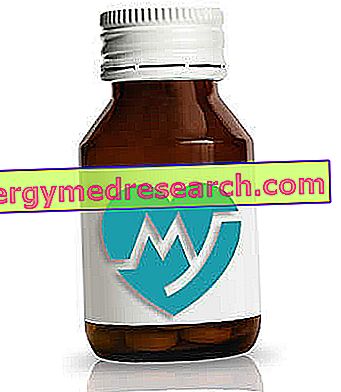
What is Cayston?
Cayston is a powder and solvent for the preparation of a nebuliser solution, containing the active ingredient aztreonam.
What is Cayston used for?
Cayston is used for the suppressive therapy of chronic (long-term) lung infections due to the P. aeruginosa bacterium in adult patients with cystic fibrosis. Cystic fibrosis is an inherited disorder that affects cells in the lungs, glands in the intestine and pancreas that secrete mucus and digestive juices.
The medicine can only be obtained with a prescription.
How is Cayston used?
Cayston should be used with a nebulizer (a special device that turns the solution into an aerosol that is breathed by the patient). The recommended dose of Cayston is 75 mg taken three times a day for four weeks. An interval of at least four hours must elapse between the doses.
A bronchodilator (a medicine that widens the airways in the lungs) should be used before each dose of Cayston. If your doctor thinks that further treatment with Cayston is required after the first course, an interval of at least four weeks is recommended before further use of Cayston.
How does Cayston work?
Cystic fibrosis produces excessive thick mucus in patients' lungs, allowing the bacterium to grow more easily. In patients with cystic fibrosis, P. aeruginosa infections usually begin in the first 10 years of life and can cause long-term lung problems. The active substance in Cayston, aztreonam, is an antibiotic belonging to the "beta-lactam" group. It works by binding to certain proteins present on the surface of the P. aeruginosa bacterium. This prevents the bacterium from building its own cell walls, suppressing the bacterium. Aztreonam has been available as an injection since the 1980s as "arginine salt". In Cayston, aztreonam is available as a "lysine salt", which allows the antibiotic to be inhaled directly into the lungs without causing irritation.
What studies have been carried out on Cayston?
The effects of Cayston were first tested in experimental models before being studied in humans. Cayston was compared with placebo (a dummy treatment) in two main studies involving a total of 375 patients with cystic fibrosis, most of whom were adults. Patients were treated for four weeks. The main measure of effectiveness in a study was the period of time elapsed before the need to give patients additional antibiotics by inhalation or intravenously. In the other study, the main measure of effectiveness was the evaluation of patients' respiratory symptoms on a scale.
What benefit has Cayston shown during the studies?
Cayston was more effective than palcebo in suppressive therapy of lung infections due to the P. aeruginosa bacterium in adult patients with cystic fibrosis . In one study, patients who received Cayston needed additional inhalation or intravenous antibiotics after 92 days compared to 71 days in patients who took placebo. In the second study, it was estimated that respiratory symptoms improved in patients who took Cayston compared to patients who took placebo.
What is the risk associated with Cayston?
The most common side effects with Cayston (seen in more than 1 patient in 10) are breath
wheezing, cough, laryngopharyngeal pain (pain in the throat and larynx), nasal congestion (nasochiuso) and fever. For the full list of all side effects reported with Cayston, see the Package Leaflet.
Cayston should not be used in people who may be hypersensitive (allergic) to aztreonam or any of the other ingredients.
Why was Cayston approved?
The Committee for Medicinal Products for Human Use (CHMP) concluded that there was an unmet medical need for new antibiotics in patients with cystic fibrosis, as many of them have already developed resistance to other antibiotics once they reach adulthood and because P. aeruginosa lung infections cause serious health problems in patients with cystic fibrosis. The CHMP decided that Cayston's benefits are greater than its risks for suppressive treatment of chronic lung infection due to the P. aeruginosa bacterium in adults with cystic fibrosis. The Committee recommended the granting of marketing authorization for Cayston. Cayston has obtained "conditional approval". This means that further tests are expected, in particular as regards the repeated use of the medicine. This will confirm whether the benefits observed in the short-term studies will be confirmed over several treatment cycles. There will also be more information on long-term safety, in particular on the development of P. aeruginosa ad aztreonam resistance. The European Medicines Agency reviews each year the new information available and, if necessary, this summary will be updated.
What information is still awaited for Cayston?
The company that makes Cayston will carry out long term Cayston studies, including a study in which Cayston is compared to nebulised tobramycin (another antibiotic) and studies in children.
More information on Cayston:
On 21 September 2009, the European Commission issued a marketing authorization valid for Cayston, valid throughout the European Union, to Gilead Sciences International Limited. The full EPAR for Cayston is available here.
Last update of this summary: 07-2009.



